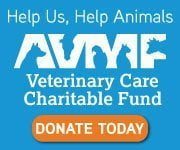This blog was originally published in November 2018 but we’ve updated it to make it even more helpful.
Please feel free to print out this article, hang it on the refrigerator, and ask your houseguests to read it, too, because it is during the holidays when we are distracted by family, friends, festivities, and food that we tend to see an increase in sick and injured pets.
And we’re pretty sure spending time at the local pet emergency hospital is not part of your holiday plans (or your budget).
Know Your Numbers
ASPCA – Animal Poison Control Center
888-426-4435
Pet Poison Helpline
855-764-7661
Veterinary Specialty Hospital (24-hour facility) in Sorrento Valley
858-875-7500
VCA Animal Hospital (24-hour facility) in Mission Valley
619-299-2400
Your Own Veterinarian’s Contact Info:
Download as PDF
______________________
Common Holiday Hazards for Our Pets:
Chocolate – Particularly Baker’s chocolate, cocoa powder, and dark chocolate are extremely toxic. Milk chocolate is not as dangerous, but can still cause your pet distress. It’s best to err on the side of safety – keep all chocolate away from pets.
People Food – Particularly onion, garlic, grapes, raisins, alcohol, fatty foods, bones, salty foods, and bread dough are among some of the more common holiday-time food hazards. These, along with other foods, can cause emergencies such as pancreatitis, bowel obstructions, anemia, and death. Again, we believe it is best to err on the safe side by keeping all people-food away from pets.

Medication – Your houseguests may not be aware of the dangers they bring into your home during a visit or party. Many human medications – in very small amounts – can be deadly to pets. And Xylitol, commonly found in gum and sugar-free candy, is irresistible – yet toxic – to dogs. Dogs will chew right through Grandma’s handbag and Grandpa’s coat pockets to get at any perceived goodies. It’s best to err on the side of safety – chat with your guests and agree upon a safe place where they should store all of their medication, toiletry cases, handbags, candy, gum and food.
Plants & Flowers – Particularly holly, holly berries, lilies, and mistletoe. Also watch out for Pine needles from wreathes or Christmas trees because these needles can cause puncture wounds in your pet’s mouth or intestinal tract. And although poinsettias are not as toxic as once thought, it’s best to err on the safe side by keeping all plants and flowers away from your pets.
Holiday Décor – Tinsel, ribbons, string, twine, and bows can become strangulation, choking, or intestinal blockage (such as intussusception) emergencies. Broken glass from ornaments can harm your pets paws, and the glass can be transferred to their mouth, tongue and sometimes swallowed as pets instinctively lick their wounds. Power cords and extension cords (which are more prevalent around the holidays as we plug-in more lights and decorations) can cause painful burns, electrocution, and death.

Home Alone when Disaster Strikes – Here’s one you likely won’t find on any other list because here in our neck of the woods, we don’t have a well-defined disaster season (like Hurricane season or Tornado season in other parts of the country). A natural or manmade disaster can strike anytime around the holiday season. It was around Christmas time that the Lilac Fire raced through neighborhoods displacing people and pets. And the images from the Camp and Woolsey fires are still painfully fresh. Do you have a disaster supplies kit and an emergency evacuation plan in place for you and your pets? Have you included neighbors and pet sitters in your plans should disaster strike when your pets are home alone?
And do you already have a long holiday to-do list and don’t know where to start when it comes to pet disaster preparedness? We thought so! We’re here to help. You can find helpful tips, videos, and a disaster supplies for pets checklist right here on our website. Please feel free to download it, print it, use it, and share it.
From the CoastView Vet Family to yours, we wish all of you a safe and happy holiday.







